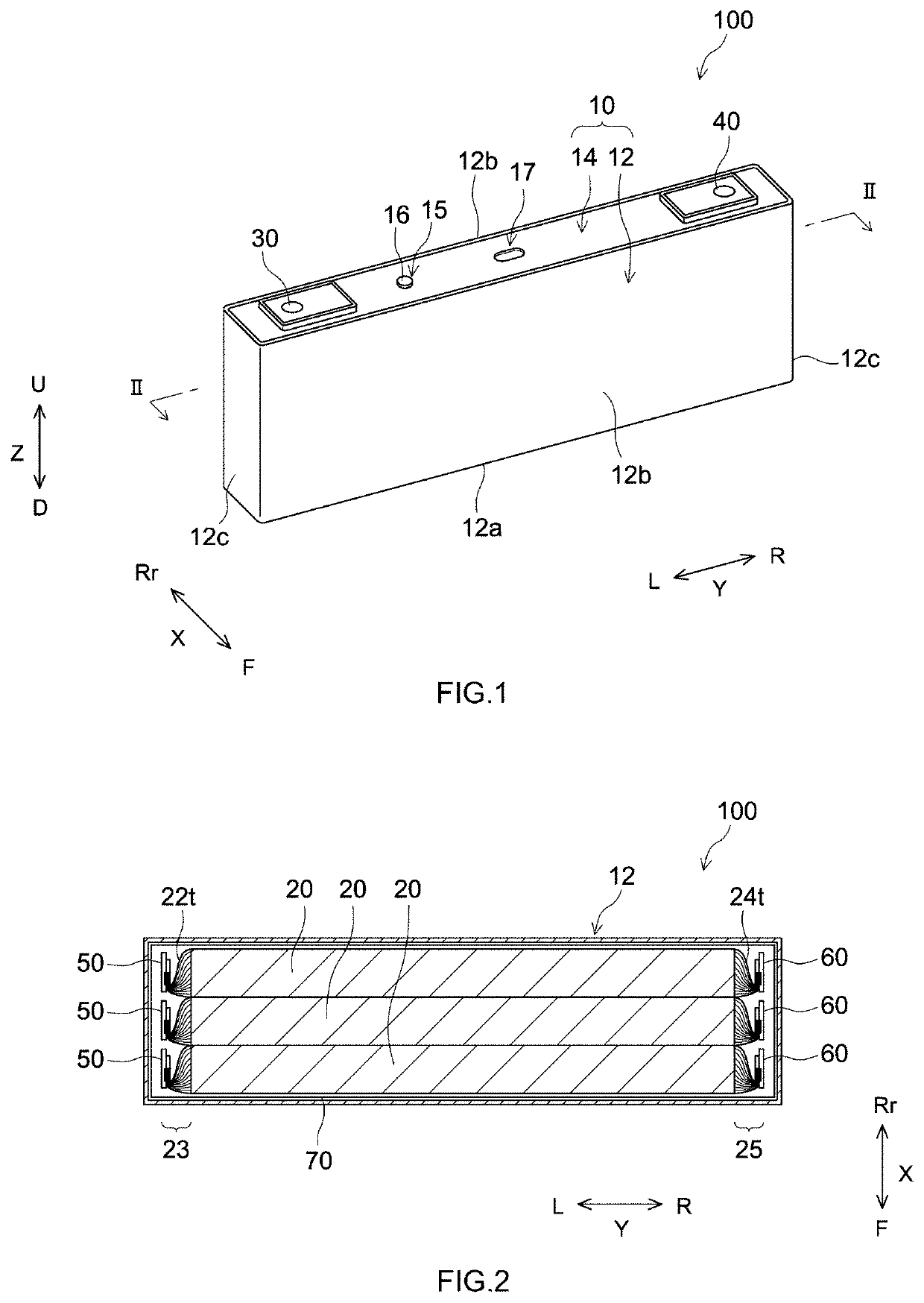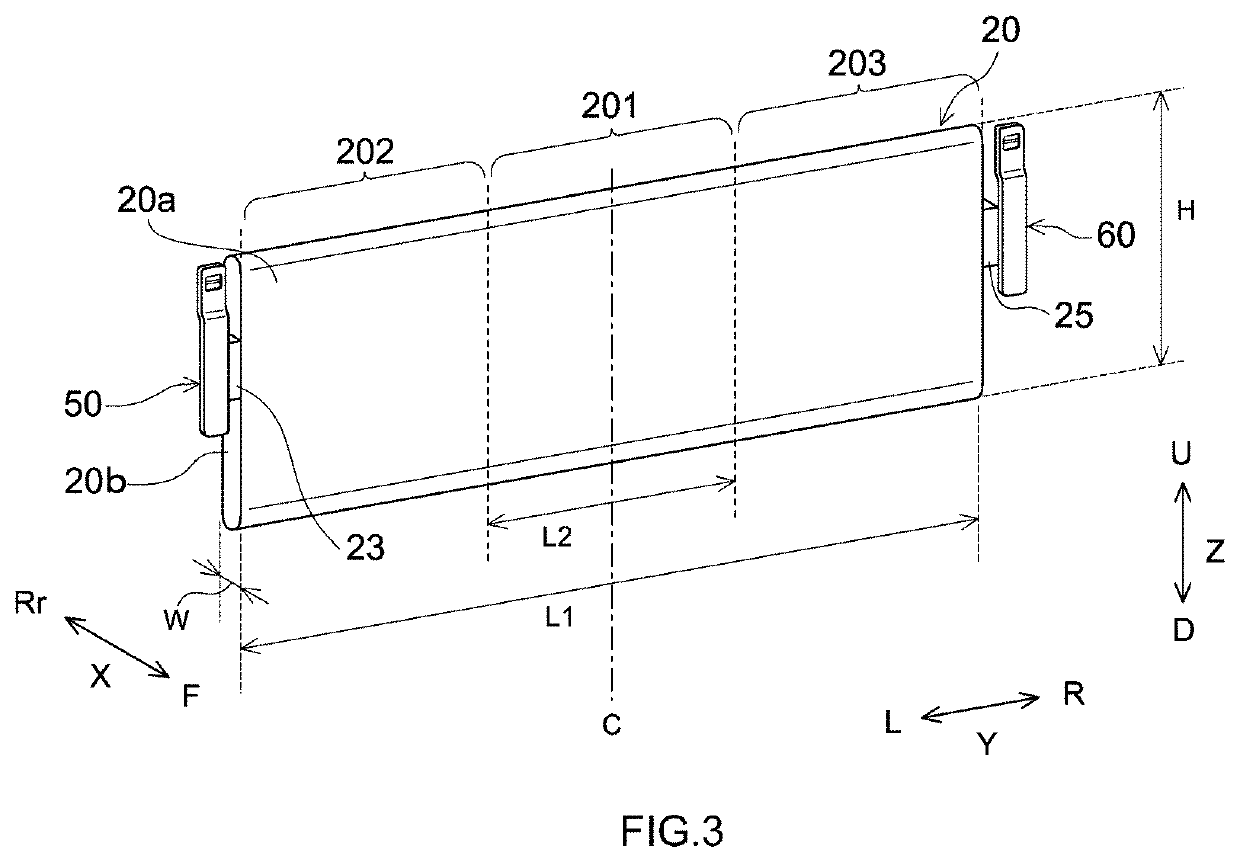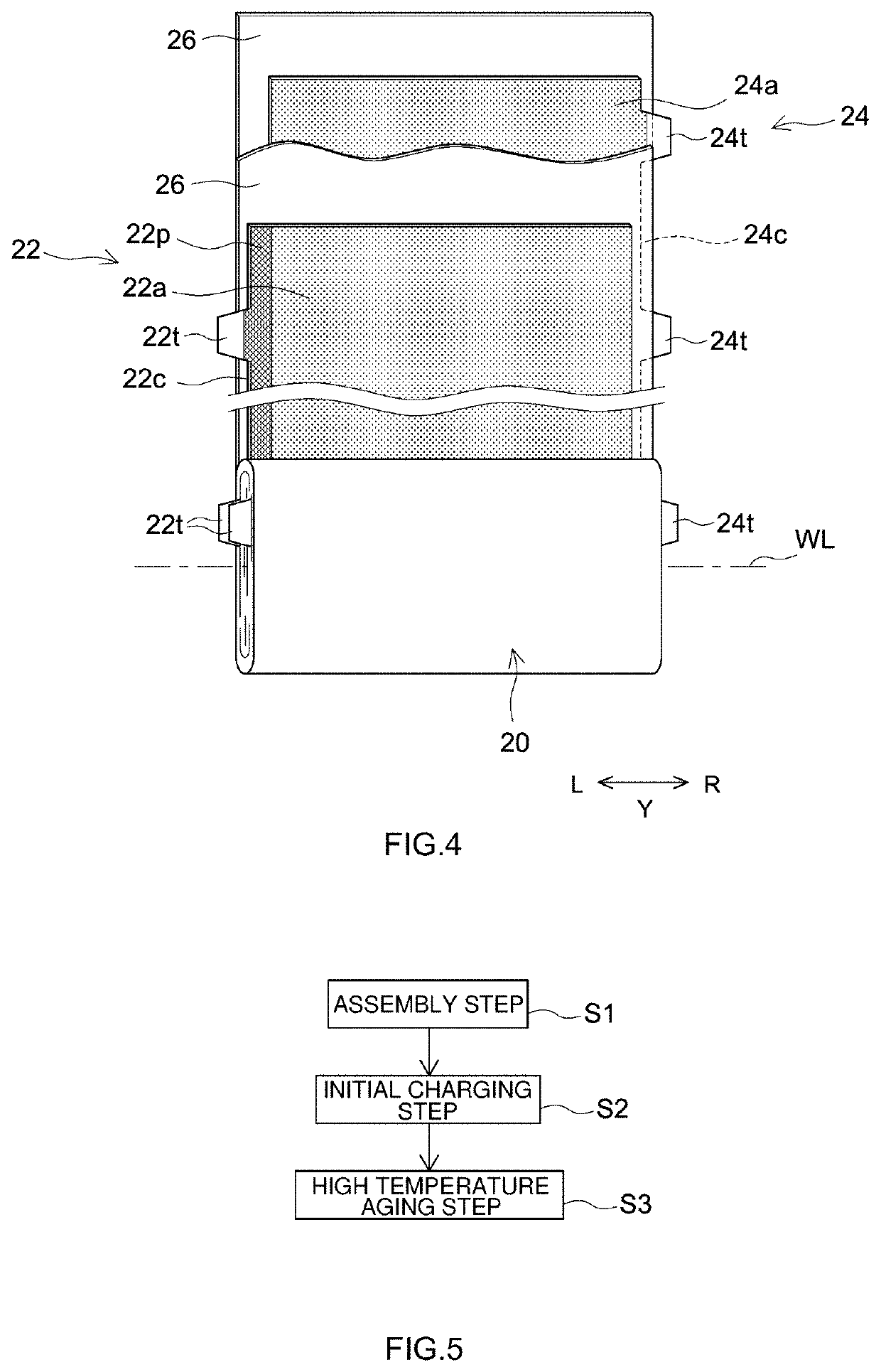Non-aqueous electrolyte solution secondary battery and manufacturing method of non-aqueous electrolyte solution secondary battery
a technology of non-aqueous electrolyte solution and secondary battery, which is applied in the manufacture of final products, wound/folded electrode electrodes, cell components, etc., can solve the problems of plastic deformation of the battery case, and inability to bend the battery case inward
- Summary
- Abstract
- Description
- Claims
- Application Information
AI Technical Summary
Benefits of technology
Problems solved by technology
Method used
Image
Examples
first embodiment
[0044]An example of a non-aqueous electrolyte solution secondary battery manufactured by a manufacturing method disclosed herein is shown in FIGS. 1 and 2. A non-aqueous electrolyte solution secondary battery 100 includes a wound electrode body 20, a non-aqueous electrolyte solution not shown in the drawings, and a battery case 10 accommodating the wound electrode body and the non-aqueous electrolyte solution. The non-aqueous electrolyte solution secondary battery 100 is a lithium ion secondary battery.
[0045]The non-aqueous electrolyte solution may contain a non-aqueous solvent and a supporting salt. As the non-aqueous solvent, organic solvents such as various carbonates used in a general lithium ion secondary battery can be used without particular limitation. Specific examples thereof include linear carbonates such as dimethyl carbonate (DMC), ethyl methyl carbonate (EMC), and diethyl carbonate (DEC); cyclic carbonates such as ethylene carbonate (EC), propylene carbonate (PC), buty...
examples
[0078]Hereinafter, a test example relating to the present invention will be described. The contents of the test example described below are for explaining how the inventors of the present invention conceived the idea of the present invention, and are not intended to limit the present invention.
[0079]Construction of Secondary Battery Assembly
[0080]A lithium nickel cobalt manganese composite oxide (NCM) as a positive electrode active material, polyvinylidene fluoride (PVdF) as a binder, and acetylene black (AB) as a conductive material were weighed to make the mass ratio of NCM:PVdF:AB=98:1:1, and were mixed in N-methyl-2-pyrrolidone (NMP) to prepare a positive electrode slurry. This positive electrode slurry was applied to both surfaces of a long band-shaped positive electrode core (aluminum foil, thickness 18 μm) and dried. This was cut into a predetermined size and rolled by a roll press to obtain a positive electrode plate having positive electrode active material layers on the bo...
second embodiment
[0107]In the first embodiment, as shown in FIG. 7, the pair of the flat plates 80 for restraint are disposed so as to face the pair of the entire large-area side walls 12b (refer to FIG. 1) of the battery case 10 (exterior body 12). However, the shape, dimensions, and the like of the restraint jig are not limited as long as the effect of the technique disclosed herein is realized. For example, a restraint jig 820 including flat plates 82 for restraint as shown in FIG. 11 may be used. As shown in FIG. 11, the secondary battery assembly 101 is preferably sandwiched by the pair of the flat plates 82 for restraint in the depth direction X of the battery case 10 so that a predetermined restraint force can be applied to the center portion 201 of the wound electrode body 20 (restraint body 280). When the restraint jig 820 is used, a predetermined restraint force is applied to the center portion 201 of the wound electrode body 20, but a restraint force is not applied to the end portion 202 ...
PUM
| Property | Measurement | Unit |
|---|---|---|
| negative electrode potential | aaaaa | aaaaa |
| negative electrode potential | aaaaa | aaaaa |
| restraint force P1 | aaaaa | aaaaa |
Abstract
Description
Claims
Application Information
 Login to View More
Login to View More - R&D
- Intellectual Property
- Life Sciences
- Materials
- Tech Scout
- Unparalleled Data Quality
- Higher Quality Content
- 60% Fewer Hallucinations
Browse by: Latest US Patents, China's latest patents, Technical Efficacy Thesaurus, Application Domain, Technology Topic, Popular Technical Reports.
© 2025 PatSnap. All rights reserved.Legal|Privacy policy|Modern Slavery Act Transparency Statement|Sitemap|About US| Contact US: help@patsnap.com



